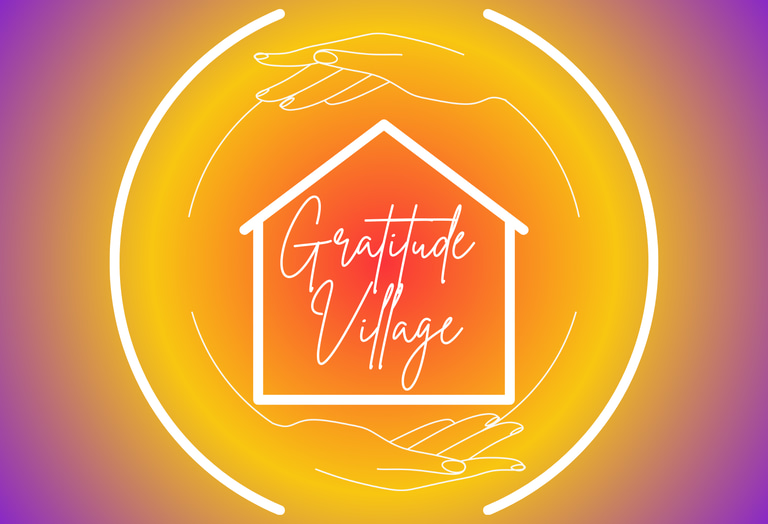Join us for an Evening with Charles Durrett 9/18/25 6-8pm Tickets available here!
What Mixed-Income Living Really Looks Like (And Why It Matters)
At Gratitude Village, we believe that when people of different incomes, ages, and backgrounds come together, something powerful happens. Our goal is clear: up to 50% of our homes will be permanently affordable, ensuring that teachers, artists, small business owners, seniors, and first-time buyers can all be part of the same thriving community. This isn’t just housing—it’s a reimagining of what it means to live well, together.
Gratitude Village
8/28/20253 min read


When most people hear “mixed-income housing,” they picture something far different from what’s actually possible. They may imagine stark divides, hidden tensions, or a compromise between quality and affordability. But in reality, research and real-world communities tell a different story—one where mixed-income neighborhoods are not only successful, but where they create places that are healthier, more connected, and more resilient.
At Gratitude Village, we believe that when people of different incomes, ages, and backgrounds come together, something powerful happens. Our goal is clear: up to 50% of our homes will be permanently affordable, ensuring that teachers, artists, small business owners, seniors, adults with disabilities and first-time buyers can all be part of the same thriving community. This isn’t just housing—it’s a reimagining of what it means to live well, together.
“A neighborhood built for everyone is a neighborhood that works for everyone.”
Busting the Myths of Mixed-Income Communities
Let’s address the elephant in the room: the myths.
Myth #1: “Mixed-income housing lowers property values.”
Fact: Studies from organizations like the Urban Institute show that well-planned mixed-income neighborhoods often hold or even increase property values. Why? Because they attract residents who are deeply invested in community life and long-term stability.
Myth #2: “People with different incomes don’t mix.”
Fact: In reality, shared spaces and shared goals create natural bonds. Whether it’s gardening together, planning a holiday party, or watching kids play in a car-free courtyard, cohousing is designed for connection across every income level.
Myth #3: “It’s just subsidized housing by another name.”
Fact: Mixed-income neighborhoods aren’t about charity; they’re about balance. By blending market-rate and permanently affordable homes, communities like Gratitude Village stay accessible while also remaining financially sustainable.
“Diversity of income is like diversity in nature—it makes the whole system stronger.”
Why Income Diversity Makes Communities Thrive
Mixed-income living doesn’t just create financial diversity—it strengthens the entire fabric of a neighborhood. Research shows that communities with a wide range of incomes tend to be:
Healthier: Access to supportive social networks reduces stress and improves overall well-being.
More resilient: Diverse income levels can buffer a community from economic swings, making it less vulnerable in downturns.
Better connected: Families from different backgrounds bring unique skills, experiences, and perspectives that enrich daily life.
Supportive of local economies: By welcoming residents with varied purchasing power, these neighborhoods help small businesses thrive.
In cohousing, these benefits are amplified by design. With shared common spaces, community meals, and neighbor-led initiatives, mixed-income living isn’t just tolerated—it’s celebrated.
How Gratitude Village Is Leading the Way
At Gratitude Village, our commitment to mixed-income living is more than a number—it’s a promise. Up to 50% of our homes will be permanently affordable, achieved through partnerships, creative financing tools like community land trusts, and a commitment to equity from day one.
This model ensures that a retired teacher can live next door to a young professional. That families with children can share meals with empty nesters. That people of different incomes don’t just live near each other—they live with each other, in a neighborhood where connection and collaboration are the norm.
“This is how we close the gap between what housing costs and what people can afford—without sacrificing beauty, sustainability, or community.”
A Snapshot of Our Vision
Here’s what mixed-income cohousing will look like at Gratitude Village:
🌱 Net Zero homes designed for affordability and sustainability.
🏡 Shared spaces like gardens, a Common House, and co-working areas that bring neighbors together.
💛 Diverse households—from first-time buyers to retirees—co-creating a community that feels like family.
🔑 Permanent affordability for up to 50% of homes, protecting access for generations to come.
This isn’t a compromise. It’s a new standard for what community can be.
Why Now Is the Time to Get Involved
We’re still in the early stages of building Gratitude Village, and that means you can be part of shaping what this neighborhood will become. As a Founding Member, you’ll have the chance to join the conversation, connect with future neighbors, and help design a community where income diversity isn’t just an idea—it’s built into the foundation.
This is your invitation to be part of a movement that redefines homeownership in Colorado.
Be Part of the Change
Mixed-income living works. It builds stronger neighborhoods, opens doors, and ensures that no one is left out of the story. Gratitude Village is proof that when we design with both people and the planet in mind, everybody wins.
👉 Be part of a neighborhood that redefines homeownership—join an upcoming info session.
Because the future isn’t gated. It’s neighborly.
💡 "Diversity of income is like diversity in nature—it makes the whole system stronger."
COMMUNITY
Join us in embracing nature, diversity and connection.
SUSTAINABILITY
DIVERSITY
info@gratitudevillagecolorado.com
720-689-4821
© 2024. All rights reserved.
AFFORDABILITY
Subscribe to our Substack
Gratitude Village Inc. is a 501(c)3 charitable corporation that values diversity, equity, and inclusion as essential to our mission
